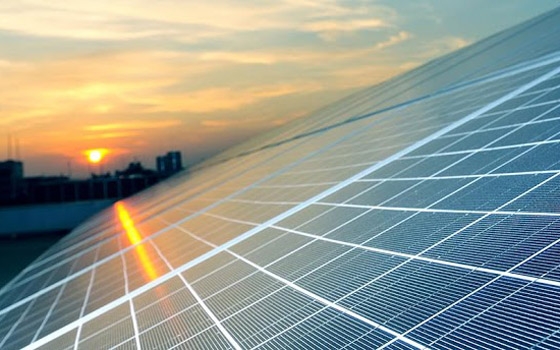Solar energy looks set to play a growing role in Oman’s energy mix as the Sultanate moves to address the two-fold challenge it faces of meeting rising demand for electricity while reducing state support for the power sector.
Oman is well placed to harness the sun’s power, having what is thought to be one of the highest solar energy densities in the world. At present, most of the sultanate’s electricity generation is from gas, which accounts for around 70% of all fuel used in the country, while the rest is largely derived from oil in the form of diesel.
Officials are keen to boost the part played by renewables in meeting domestic electricity demand, since this would free up more of Oman’s hydrocarbon output for export and help reduce losses in revenue incurred through channeling supplies to the privatized power sector at a rate well below market value.
According to estimates from the Authority for Electricity Regulation, Oman, state electricity subsidies for the area covered by the Main Interconnected System (MIS) were expected to increase 50% in 2012 year-on-year.
The regulator said in a report issued at the end of last year that electricity subsidies for users connected to the distribution grid would reach OMR165m ($428.5m), accounting for almost 30% of the total cost of powering the country. In its report, the authority pointed out that the real cost was even higher, given that users benefitted from an indirect subsidy on fuel sold to production facilities at below open market value.
“Foregoing opportunities to use domestically produced gas and diesel fuel for purposes such as export or increasing allocations to industrial projects, imposes real costs on the government,” the regulator said. The MIS distribution grid provides electricity for most of Oman, except the Salalah region and those parts of the country served by the Rural Areas Electricity Company (RAEC).
In the 2013 draft budget, Oman’s fuel subsidies, including those given for petrol, add up to $1.9bn and account for more than 40% of the projected deficit for the financial year and more than half of the total subsidies bill.
Announcing the budget in mid-March, Darwish bin Ismaeel al Balushi, the Minister Responsible for Financial Affairs, said a careful review of fuel subsidies was needed to rein in rising costs and promote more efficient electricity usage.
A national energy policy review currently being finalized is expected to put a greater emphasis on renewable power sources. Estimates indicate that thanks to its high solar energy densities, or “sky clearness”, Oman could more than meet its present electricity needs by deploying concentrated solar power (CSP) technology over an area equivalent to just one tenth of its land mass. The government has already set a target of generating 10% of its electricity from the sun by 2020, and many believe the findings of the review will prompt officials to consider increasing the percentage, given the rising cost of supporting conventional electricity generation.
Oman’s bid to boost the use of alternative power is already moving forward, with the Authority for Electricity Regulation announcing in mid-March that it planned to issue new guidelines promoting the use of renewable energy in rural areas. The RAEC is now required to include a component of renewable energy technology, which could be either solar or wind, in any project where funding has been requested. The only exceptions will be projects where the use of renewables is not technically feasible or financially viable, the authority said.
In a press statement issued on March 16, John Cunneen, the authority’s executive director, said the new regulations were confirmation of Oman’s commitment to renewable energy. “These new requirements for electrification funding will accelerate the deployment of renewable energy technologies in rural areas and ensure projects are subject to competitive tendering,” Cunneen said.
The requirement to utilize renewable power in rural projects will provide greater opportunities for suppliers of solar and wind energy technology, while helping to strengthen the market for such services. Currently, the costs for solar energy are higher than those of power stations using conventional fuels. However, the gap is narrowing as economies of scale take effect, with higher volumes of production for materials and improved technology lowering margins. Oman will also benefit from being able to redirect more of its gas production to the export market or towards supplying its expanding industrial base.
While shorter-term costs, including initial investments required to establish a viable solar energy production sector, may push up per-unit prices, these should be offset by long-term benefits. Overall, the stronger commitment to renewable energy sources should help Oman reduce the drain on its own hydrocarbons reserves and bring down subsidies, allowing the Sultanate to redirect budgetary funds elsewhere.
Oxford Business Group
8 April

























































